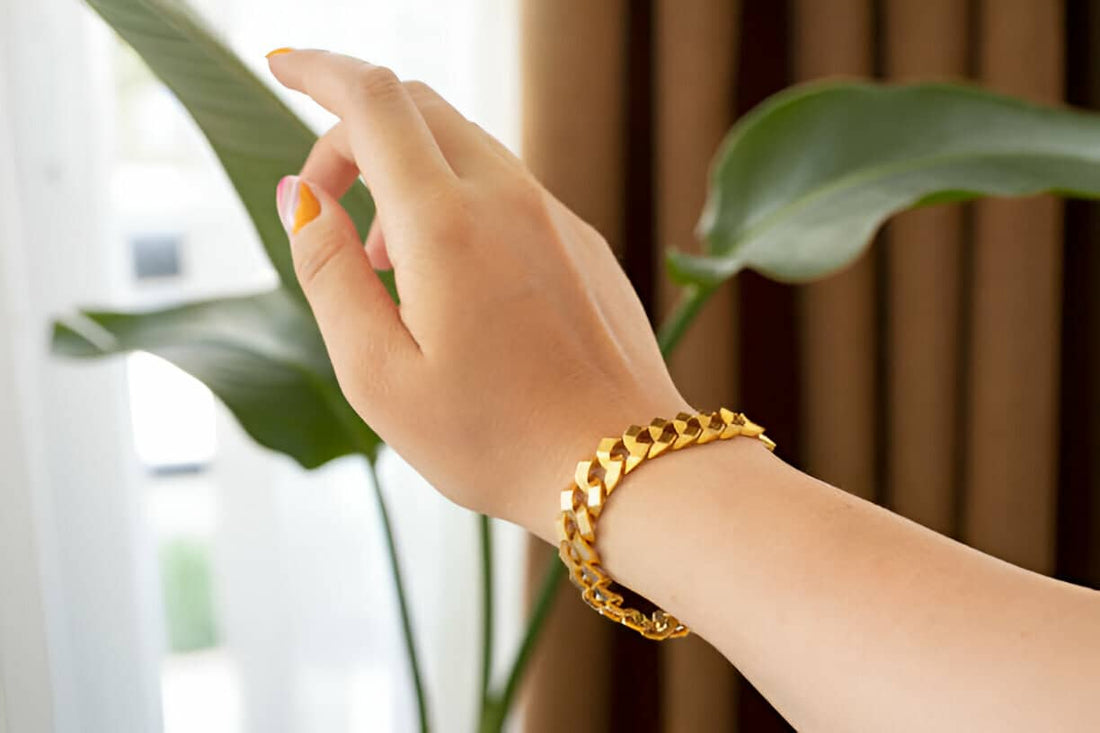
Why Does Gold Jewelry Turn Skin Black? Understanding Gold Jewelry
Gold, particularly 14k gold, is a popular material for jewelry due to its durability and beauty. However, some individuals experience skin infections and allergic reactions when wearing gold jewelry. This article explores whether such reactions indicate that the gold is fake or real.
Importance of Understanding Gold Jewelry Allergies
Understanding gold allergies is crucial for individuals who enjoy wearing gold jewelry but suffer from adverse reactions. Misidentifying the cause of these reactions can lead to unnecessary worry and prevent individuals from enjoying their favorite accessories. Additionally, distinguishing between real and fake gold in the context of skin reactions is essential for both health and financial reasons.
Understanding Gold and Its Alloys
What is 14K Gold?
An alloy known as 14k gold is created by combining pure gold with additional metals. The "14k" indicates that there are 14 parts of gold in every 24 parts of the alloy or 58.3% gold. The remaining 41.7% is composed of other metals, including zinc, nickel, copper, and silver.
Composition of 14k Gold
The composition of 14k gold varies depending on the specific mix of metals used. Commonly, it includes:
- Gold: 58.3%
- Silver: 20-25%
- Copper: 10-15%
- Zinc: 5-10%
These additional metals enhance the durability and color of the gold, making it suitable for everyday wear.
Differences Between 24k, 18k, and 14k Gold
- 24k Gold: Pure gold (99.9% gold) is soft and malleable, making it unsuitable for jewelry that requires strength and durability.
- 18k Gold: Contains 75% gold and 25% other metals, offering a good balance between purity and durability.
- 14k Gold: As mentioned, it contains 58.3% gold and is more durable and affordable than higher karat golds, making it a popular choice for jewelry.
Types and Categories of Gold Allergies
Immediate Allergic Reactions
Immediate allergic reactions occur within minutes to hours of contact with gold. Sometimes gold rings turn your finger black and cause allergic reactions. Symptoms may include redness, itching, and swelling at the site of contact.
Delayed Allergic Reactions
Delayed allergic reactions, or contact dermatitis, develop over a longer period, typically 24-48 hours after exposure. These reactions can cause more extensive skin irritation and may persist for days or weeks.
Contact Dermatitis from Gold
Exposure to gold alloys can result in the typical allergic reaction known as contact dermatitis. It can appear anywhere the skin comes into contact with gold jewelry and presents as a red, itchy rash.
Symptoms and Signs of Gold Allergy
Common Symptoms
- Redness and inflammation
- Itching and burning sensations
- Swelling and tenderness
- Dry, scaly skin
Severe Reactions
In rare cases, gold allergies can cause severe reactions such as blistering, hives, or spreading rashes that may require medical attention.
Differentiating Gold Allergy from Other Skin Conditions
Gold allergies can be mistaken for other skin conditions like eczema or psoriasis. A key differentiator is the localization of symptoms to areas in contact with gold jewelry.
Treatment Options
Medical Treatments
Medical treatments for gold allergies include topical corticosteroids to reduce inflammation and antihistamines to alleviate itching.
Home Remedies
Home remedies such as applying aloe vera, coconut oil, or cold compresses can soothe irritated skin and promote healing.
Lifestyle Adjustments
Avoiding gold jewelry and opting for hypoallergenic alternatives like stainless steel, titanium, or platinum can prevent allergic reactions.
Preventive Measures
Tips to Avoid Allergic Reactions
To prevent allergic reactions, consider the following:
- Choose higher karat gold (18k or 24k) with fewer alloy metals.
- Ensure jewelry fits well to reduce friction.
- Remove jewelry during activities that cause sweating.
Choosing the Right Type of Gold
When purchasing 18k gold jewelry, look for items labeled "nickel-free" or "hypoallergenic" to reduce the risk of allergic reactions. Consulting with a knowledgeable jeweler can also help you make an informed choice.
Proper Care of Gold Jewelry
Maintaining your gold jewelry is crucial to preventing allergic reactions. Regularly clean your jewelry to remove dirt and sweat that can irritate the skin. Store your jewelry in a dry, cool place to prevent tarnishing and contamination.
Conclusion
Understanding the causes and symptoms of gold allergies, as well as the differences between real and fake gold, is crucial for individuals who experience skin reactions. Proper diagnosis and treatment can help manage and prevent these allergies. Please feel free to contact us with any questions you may have.
Frequently Asked Questions
Can real gold cause allergic reactions?
Yes, real gold can cause allergic reactions, particularly if it is not pure (24K). Lower karat gold, such as 14k or 18k, contains other metals that can trigger allergies.
How can I tell if my gold is real?
You can verify the authenticity of gold through hallmark stamps, professional appraisals, or using a gold testing kit. Real gold is usually stamped with its karat number (e.g., 14k, 18k, 24k).
What should I do if I have a gold allergy?
If you suspect a gold allergy, stop wearing the jewelry and consult a dermatologist for a proper diagnosis and treatment. Consider switching to hypoallergenic metals like platinum or titanium.
Are there hypoallergenic alternatives to gold jewelry?
Yes, hypoallergenic alternatives include platinum, titanium, stainless steel, and high-karat gold (such as 24k). These materials are less likely to cause allergic reactions.
Can a gold allergy develop over time?
Yes, you can develop a gold allergy over time due to prolonged exposure, especially to the alloy metals in lower-karat gold.








No comments